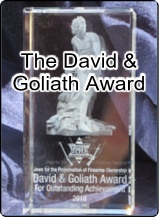

Review: 1934 National Firearms Act,
Original Bill and Hearings
![]()

By Dean Weingarten. February 5th, 2017
Article Source
This ebook is the entirety of the National Firearms Act and Hearings, in a digitized 166 pages, from the House of Representatives Ways and Means Committee, starting on Monday, 16 April, 1934. It is available from Google at no charge as an ebook.
The Hearings of the National Firearms Act of 1934 provide an immensely valuable resource in understanding the intentions of the law. It provides a good look at how the intricacies and provisions of the first really significant Federal Firearms law concerning individuals, came to be.
The book is the official record of the hearings in the House Ways and Means Committee and of testimony given in two periods. First April 16 to 18, 1934, then from May 14 to May 16, 1934.
The most important thing to be noted is that the law was first concerned with the effective registration and regulation of civilian ownership of pistols and revolvers. Machine guns, sawed off shotguns, and gun mufflers/silencers were of relatively less concern, in that order.
There was near unanimous belief that machine guns could be taxed so as to make them virtually unavailable to the common man. That was already the case because of the price. At the time, the only available sub machine gun was the Thompson. The retail price was $200, and they were not selling strongly. There was only slight mention of other machine guns.
There was somewhat less agreement on sawed off shotguns. Sawed off rifles were added almost as an afterthought.
The hearings never touched on gun mufflers/silencers at all; no reason was given for their regulation. Machine guns were a concern, but they were few in number. The proponents mentioned they were being manufactured illegally by bootleggers.
It is clearly stated in the hearings, that making the law a "tax" was to avoid the potential violation of the Second Amendment. The Second Amendment had not yet been tested in the Supreme Court. The consensus was that States were not restricted by the Second Amendment.
The hearings give an excellent view of the maneuvering of the NRA. Caught somewhat off guard, they rallied and had significant impact. The reality is considerably different from various rumors you may have heard over the last several decades.
It was the lobbying of gun owners around the nation, lead by the NRA, that killed the inclusion of pistols and revolvers in the bill. Registration of pistols and revolvers, at no fee, was offered. That option was also killed. The proponents could not give an adequate answer as to why registration was needed.
If a student of gun legislation wishes to understand the history and the antecedents of current legislation, here is an excellent place to start. Nearly all the same arguments used today were presented in 1934.
For example, semi-automatics that could hold 12 or more rounds were initially defined as machine guns. Changing that definition to the current one, where the requirement is that more than one shot results per pull of the trigger, was one of the first NRA successes.
The ignorance of the people proposing the legislation is obvious. It is eerily reminiscent of the ignorance seen in the current debate. Most arguments were based on anecdotal evidence.
Today, there is the advantage of much more data and analysis. The arguments are essentially the same.
I highly recommend this book to anyone interested in firearms and legislation. It gives important insights into the current debate.
©2017 by Dean Weingarten: Permission to share is granted when this notice and link are included. Link to Gun Watch.
(Download this 1934 NFA document as a PDF file.)
Everyone pretty much knows about the 1934 NFA, but more than likely may never have seen the content. This usefully addresses that, and it is interesting to note that making a law a 'tax' conveniently circumvented the Second Amendment! To this day, 'tax' is the excuse.
![]()

























